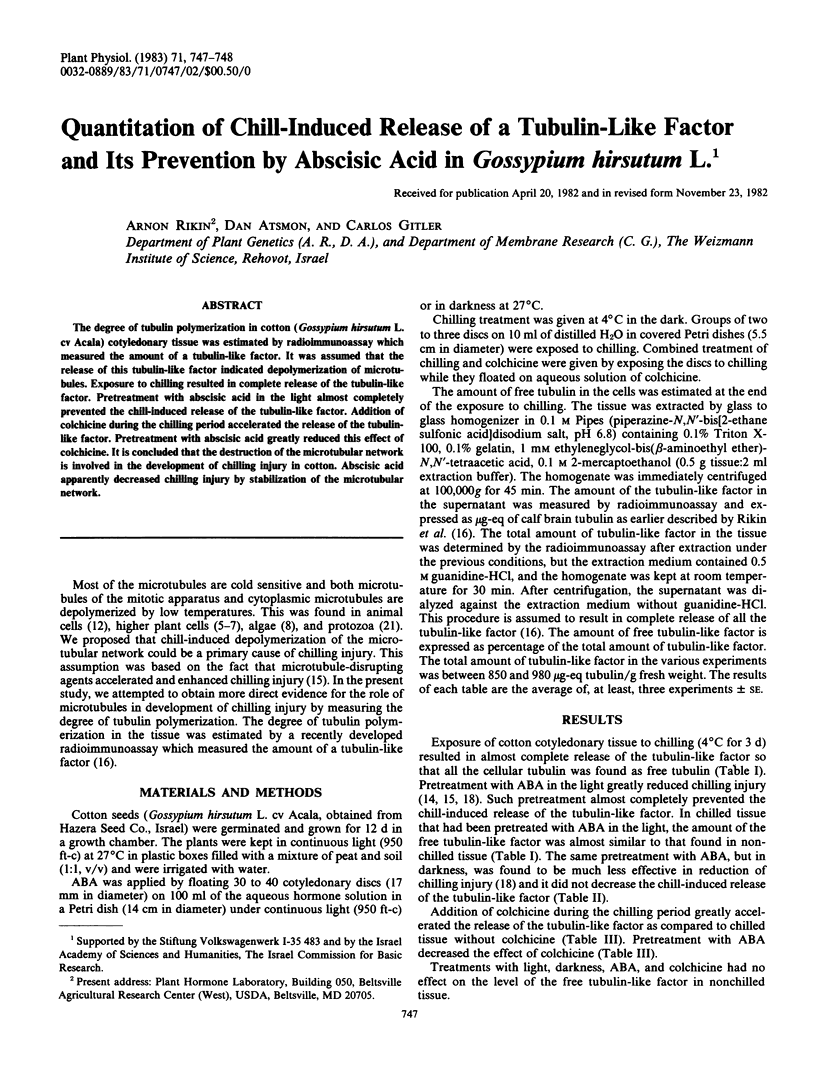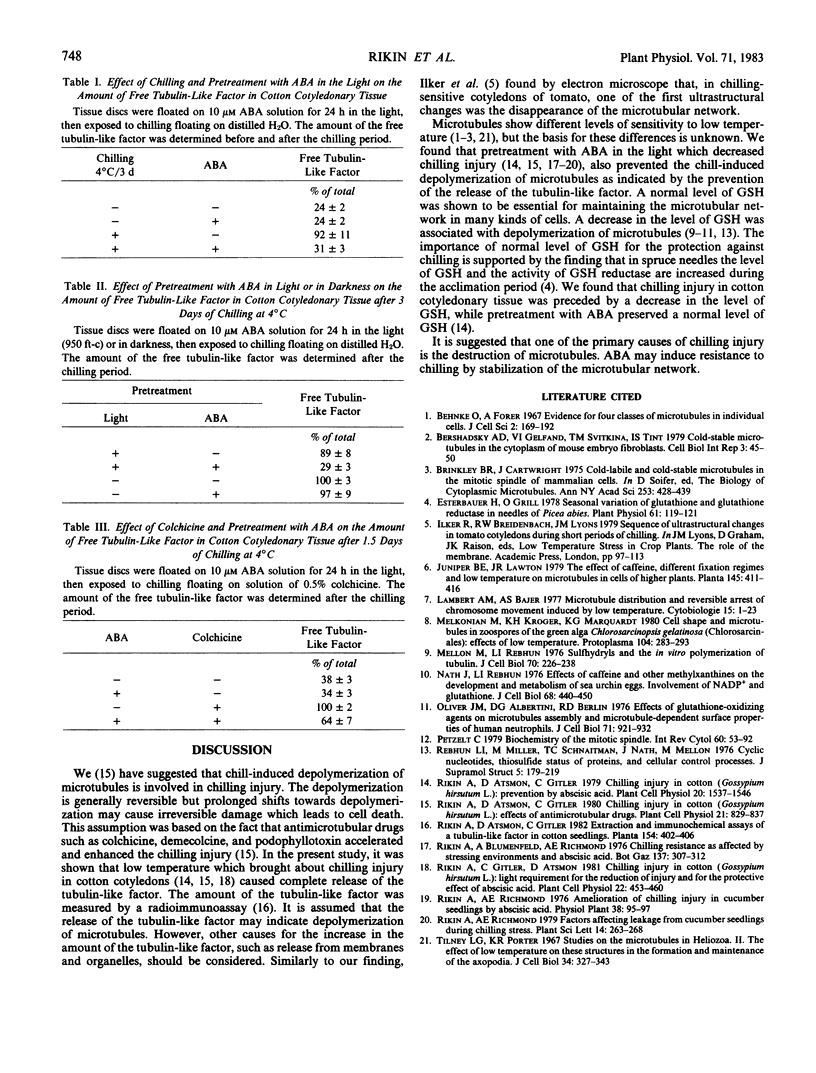Abstract
The degree of tubulin polymerization in cotton (Gossypium hirsutum L. cv Acala) cotyledonary tissue was estimated by radioimmunoassay which measured the amount of a tubulin-like factor. It was assumed that the release of this tubulin-like factor indicated depolymerization of microtubules. Exposure to chilling resulted in complete release of the tubulin-like factor. Pretreatment with abscisic acid in the light almost completely prevented the chill-induced release of the tubulin-like factor. Addition of colchicine during the chilling period accelerated the release of the tubulin-like factor. Pretreatment with abscisic acid greatly reduced this effect of colchicine. It is concluded that the destruction of the microtubular network is involved in the development of chilling injury in cotton. Abscisic acid apparently decreased chilling injury by stabilization of the microtubular network.
Full text
PDF

Selected References
These references are in PubMed. This may not be the complete list of references from this article.
- Behnke O., Forer A. Evidence for four classes of microtubules in individual cells. J Cell Sci. 1967 Jun;2(2):169–192. doi: 10.1242/jcs.2.2.169. [DOI] [PubMed] [Google Scholar]
- Bershadsky A. D., Gelfand V. I., Svitkina T. M., Tint I. S. Cold-stable microtubules in the cytoplasm of mouse embryo fibroblasts. Cell Biol Int Rep. 1979 Jan;3(1):45–50. doi: 10.1016/0309-1651(79)90067-5. [DOI] [PubMed] [Google Scholar]
- Brinkley B. R., Cartwright J., Jr Cold-labile and cold-stable microtubules in the mitotic spindle of mammalian cells. Ann N Y Acad Sci. 1975 Jun 30;253:428–439. doi: 10.1111/j.1749-6632.1975.tb19218.x. [DOI] [PubMed] [Google Scholar]
- Esterbauer H., Grill D. Seasonal Variation of Glutathione and Glutathione Reductase in Needles of Picea abies. Plant Physiol. 1978 Jan;61(1):119–121. doi: 10.1104/pp.61.1.119. [DOI] [PMC free article] [PubMed] [Google Scholar]
- Mellon M. G., Rebhun L. I. Sulfhydryls and the in vitro polymerization of tubulin. J Cell Biol. 1976 Jul;70(1):226–238. doi: 10.1083/jcb.70.1.226. [DOI] [PMC free article] [PubMed] [Google Scholar]
- Nath J., Rebhun J. I. Effects of caffeine and other methylxanthines on the development and metabolism of sea urchin eggs. Involvement of NADP and glutathione. J Cell Biol. 1976 Mar;68(3):440–450. doi: 10.1083/jcb.68.3.440. [DOI] [PMC free article] [PubMed] [Google Scholar]
- Oliver J. M., Albertini D. F., Berlin R. D. Effects of glutathione-oxidizing agents on microtubule assembly and microtubule-dependent surface properties of human neutrophils. J Cell Biol. 1976 Dec;71(3):921–932. doi: 10.1083/jcb.71.3.921. [DOI] [PMC free article] [PubMed] [Google Scholar]
- Petzelt C. Biochemistry of the mitotic spindle. Int Rev Cytol. 1979;60:53–92. doi: 10.1016/s0074-7696(08)61259-0. [DOI] [PubMed] [Google Scholar]
- Rebhun L. I., Miller M., Schnaitman T. C., Nath J., Mellon M. Cyclic nucleotides, thioldisulfide status of proteins, and cellular control processes. J Supramol Struct. 1976;5(2):199–219. doi: 10.1002/jss.400050208. [DOI] [PubMed] [Google Scholar]
- Tilney L. G., Porter K. R. Studies on the microtubules in heliozoa. II. The effect of low temperature on these structures in the formation and maintenance of the axopodia. J Cell Biol. 1967 Jul;34(1):327–343. doi: 10.1083/jcb.34.1.327. [DOI] [PMC free article] [PubMed] [Google Scholar]


